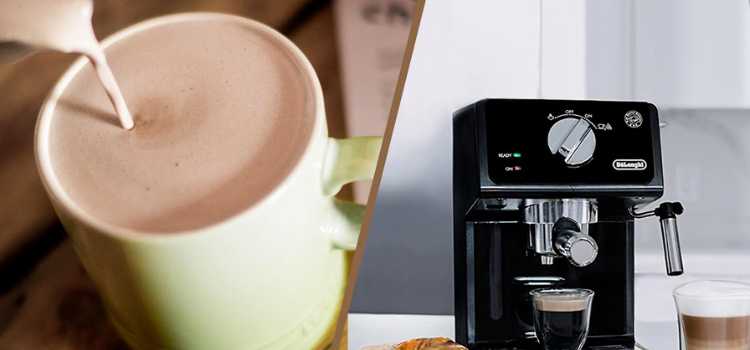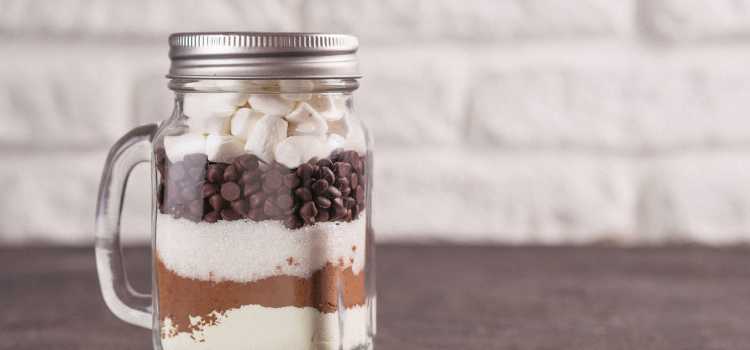As an Amazon Associate, I earn from qualifying purchases

In the world of kitchen appliances, coffee makers reign supreme for their convenience and speed. But their utility isn’t limited to brewing just coffee. Many adventurous drinkers find themselves wondering about the possibilities of using a coffee maker for other beverages, like hot chocolate. The thought of enjoying a warm, frothy cup of hot chocolate brewed in the same appliance that crafts their morning coffee is intriguing.
However, before you pour a packet of hot chocolate mix into your coffee maker, there are several factors to consider. This article explores whether it’s feasible—and advisable—to use a coffee maker to brew hot chocolate and offers insights into better alternatives.
Functionality of Coffee Makers
To understand whether a coffee maker can be used for hot chocolate, it’s essential to grasp how these machines operate. Coffee makers are designed to heat water to a specific temperature, then pass it through ground coffee beans to extract flavor and aroma. The hot water drips through a filter, collecting the brewed coffee in a carafe below.
A typical coffee maker is optimized for the consistent flow and pressure required to brew coffee. It’s a straightforward process well-suited for water and small, soluble particles, like coffee grounds. However, the design and function of coffee makers limit their effectiveness with substances that don’t dissolve as readily or might clog the system, such as hot chocolate mix.
Potential Issues with Using Hot Chocolate Mix
While it might seem simple to substitute coffee grounds with hot chocolate mix, doing so can lead to several issues:
- Clogging and Residue Buildup: Hot chocolate mix often contains sugar, milk powder, and cocoa, which can create a sticky residue. This residue may clog the coffee maker’s filter and other components, potentially damaging the machine. Over time, the buildup can impede water flow and affect the coffee maker’s performance.
- Impact on Taste and Flavor Contamination: Using your coffee maker for hot chocolate can leave behind residual flavors. Cocoa and sugar residues could mix with future coffee brews, resulting in an undesirable taste. Similarly, lingering coffee flavors might not complement hot chocolate well, leading to an unsatisfactory beverage experience.
- Cleaning Challenges and Maintenance Concerns: Cleaning a coffee maker after brewing hot chocolate is more challenging than after brewing coffee. Sugary, sticky residues require thorough cleaning to prevent microbial growth and ensure the appliance remains hygienic. Frequent intensive cleaning might also wear out the coffee maker faster.
Alternative Methods for Making Hot Chocolate

Fortunately, there are several effective ways to make hot chocolate without compromising your coffee maker:
- Traditional Stovetop Method: This classic method involves mixing hot chocolate powder or real chocolate with milk on a stovetop. Heat the mixture gently, stirring continuously to achieve a rich, creamy texture. This method allows better control over flavor and thickness, resulting in a more satisfying cup.
- Using a Microwave or Kettle: For quick preparation, a microwave or kettle can heat water or milk, which you can then add to the hot chocolate mix. This method is fast and minimizes cleanup, making it convenient for single servings.
- Specialty Appliances Designed for Making Hot Chocolate: There are appliances specifically designed for hot chocolate, such as milk frothers or electric hot chocolate makers. These devices heat and mix the ingredients, producing a perfectly blended drink. Investing in a dedicated appliance can be worthwhile if you frequently enjoy hot chocolate.
Expert Opinions
Many appliance experts and baristas advise against using coffee makers for non-coffee beverages like hot chocolate. They emphasize that coffee makers are engineered for a specific purpose: extracting flavors from coffee grounds with hot water. Extending their use beyond this can lead to maintenance issues and affect the appliance’s longevity.
Experts suggest sticking to methods designed for hot chocolate preparation, ensuring you enjoy the best taste and texture. Moreover, a barista might recommend experimenting with different types of chocolate or cocoa mixes to tailor the drink to your preference without the limitations imposed by a coffee maker.
Conclusion
While using a coffee maker to prepare hot chocolate might seem clever, it presents more challenges than benefits. The potential for clogging, flavor contamination, and cleaning difficulties outweigh the convenience factor. Instead, consider the traditional stovetop method, microwave, or specialized hot chocolate appliances for a delicious and hassle-free experience.
By choosing the right tools for the job, you can enjoy your favorite hot beverages without compromising your kitchen appliances. Prioritize safety and appliance health by using coffee makers as intended, and explore dedicated methods for the perfect cup of hot chocolate.
FAQ
Can you put hot chocolate in a coffee machine?
It’s not recommended to put hot chocolate directly in a coffee machine. The mix can cause clogging and leave sticky residues, potentially damaging the machine. Instead, prepare hot chocolate separately using a stovetop or microwave for a better, cleaner result.
Can I put cocoa powder in my coffee maker?
Using cocoa powder in a coffee maker isn’t advisable. Cocoa can clog filters and leave residue that affects the machine’s performance. It’s best to make hot chocolate separately and then mix it with coffee if desired, ensuring both beverages retain their intended flavors.
Can I add hot chocolate powder to coffee?
Yes, you can add hot chocolate powder directly to brewed coffee to create a mocha-like drink. Mix the powder into your coffee thoroughly to dissolve it completely. This method allows you to enjoy a chocolatey coffee without risking damage to your coffee maker.
Can you use a coffee dispenser for hot chocolate?
Coffee dispensers can be used for hot chocolate if they’re designed to handle thicker liquids. However, ensure thorough cleaning after use to prevent flavor contamination and residue buildup. If unsure, opt for specialized equipment or manual preparation methods for the best results.
As an Amazon Associate, I earn from qualifying purchases